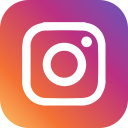|
According to the FCC's 2018 report, 19 million Americans lack access to high-speed internet service. With high-speed access becoming a vital resource for access to job, educational and entertainment opportunities, there have been ongoing efforts to expand access to high-speed internet to all Americans, such as great options being offered like these viasat internet plans. Keep reading for more details on five of the ways access is being expanded in rural America. Electric Powerline InternetInternet service in New York City and other urban areas is pretty widespread, but many rural areas lack high-speed access. Broadband over powerline is a technology that would allow customers to receive high-speed internet access through their electrical outlets. This service would require users to purchase a powerline modem to plug into their electrical outlet, but would not require any additional wiring. Because most rural areas that lack broadband access already have access to either satellite internet for rural areas or electrical service, this emerging technology is particularly intriguing for expanding high-speed access to rural Americans. Because the technology can be implemented without building entirely new networks, it offers a lower cost option than fiber networks, however, there are drawbacks, such as signal interference. Fiberoptic NetworksMuch of the backbone of the internet is connected by fiber optic cable, which is widely considered to be the fastest form of broadband technology currently available for residential use. Internet providers have been hesitant to expand fiber networks to rural areas due to the high cost of installation, however, efforts are being made by many municipalities to entice providers to expand into their communities. Currently, about 25% of the United States has access to a fiber network. Because this technology is considered to be "future proof," because of the capability to support speeds many times faster than what is currently available, fiber is an attractive option for communities who wish to avoid spending a lot of money to provide access that may become obsolete a few years down the road. Fiber is also a good option for communities struggling with the high cost of maintaining copper networks. USDA FundingThe United States Department of Agriculture is attempting to expand high-speed access to rural Americans through projects such as the $48 million earmarked for expanding access to an additional 22,000 homes in Virginia. The USDA has cited the role high-speed access plays in economic opportunity and quality of life as the motivation for expanding access. The project is expected to take several years to complete but aims to have most customers online within six years. In 2018 the USDA was given $600 million to expand internet access in rural America through their ReConnect program. The USDA will have another $550 million to work with in 2020. HotspotsSome communities are attempting to bridge the gap while infrastructure is being built or funding is being sought by offering hotspots. These hotspots are public access points, placed in public buildings, such as libraries, fire stations or administration buildings, that can be accessed by residents who lack high-speed access in their homes. Many communities also encourage local businesses to participate. The advantage of hotspots is that access can be expanded more quickly and with less expense than the cost of installing new networks. The downside is that residents must travel to a hotspot location to utilize the service, which limits its utility. Most communities view this option as a temporary fix while more permanent solutions are being implemented. FCC FundingIn August of 2019, the FCC proposed the $20.4 billion Rural Digital Opportunity Fund intending to provide access to as many as 6 million rural homes and businesses nationwide. The two-phased process is set to be voted on at the FCC's January 30, 2020 meeting. Communities will need to bid for funds and the initial phase I allotment of $16 billion is slated to go to communities who currently have no broadband access at all. Access to many modern economic, educational and entertainment options relies on high-speed internet service. Unfortunately, many Americans living in rural areas lack high-speed access. However, through a variety of efforts at the federal and local levels, access is being expanded with the goal that in a few years all Americans will have the ability to receive high-speed internet service in their homes and businesses.
2 Comments
|
About ME:I'm a NYC metro area mom blogger living in NJ with my Japanese husband & our 3 kids (twins plus 1), focusing on fun and honest product and travel reviews, saving moms time finding the best for their families! Find what you need in the menu bar or search section above! Categories
All
Archives
July 2024
|












 RSS Feed
RSS Feed



